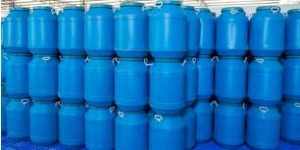Glutaraldehyde Fixative (2.5%, for electron microscopy)
The purpose of fixation is to preserve the original morphological structure of cells and tissues. Fixation agents can prevent the autolysis of endogenous lysosomal enzymes on their own tissues and cells, and inhibit the growth of bacteria and fungi. Fixation agents change the internal structure of proteins by coagulation, formation of added compounds, and the like. Thereby inactivating the enzyme. The fixative physically alters the extracellular components of the cells.
Fixatives are mainly divided into aldehyde fixatives, mercury fixatives, alcohol fixatives, oxidant fixatives and picrate fixatives. Formalin in aldehydes and ethanol in alcohols are more commonly used. Glutaraldehyde fixative can cause the deformation of protein α-helix structure, which is not conducive to peroxidase staining. Glutaraldehyde fixative has a fast fixing speed and poor permeability.
How to use:
1. Operate according to the specific requirements of the experiment.
2. Take fresh specimens and fix them in glutaraldehyde fixative at 4 ℃ for 1 to 4 hours immediately. The fixation time of slightly larger specimens should be extended appropriately.
3. Submit for inspection or store at 4 ℃.
Notes:
1. Glutaraldehyde fixative is corrosive to a certain extent. Please operate carefully in a well-ventilated environment to avoid inhalation.
2. The thickness of the tissue is different, and the fixation time is also different. The suitable thickness of conventional biopsy tissue is 2 to 4 mm, generally not more than 6 mm. Proper selection of tissues is beneficial to the penetration of fixative.
3. The volume of the fixative should be sufficient. Generally, the volume ratio of the fixative to the tissue block should be greater than 10:1. If the volume is not large enough, the fixing solution can be changed 1 to 3 times during the fixing period.
4. The effect of temperature on fixation is obvious. Increasing the temperature can accelerate the fixation, but it is better not to increase the temperature of this fixative.
5. After the fresh tissue is taken out, it should be fixed in time. If it cannot be fixed in time, it should be stored in normal saline and sent for examination in time.
6. For your safety and health, please wear lab coats and disposable gloves for operation.
To study the effect of different fixatives on the effect of scanning electron microscopy on biological samples.
A scanning electron microscope has the characteristics of high resolution, large depth of field, and wide range of imaging magnification. Therefore, it is more and more widely used in biology, medicine, chemical industry, geology, and materials.
In order to better observe the microstructure of the material, the sample must first be treated before observation. The effect of different fixatives on the processing of the sample is important.
To study the effect of different fixatives on the effect of scanning electron microscopy on biological samples. Four fixatives were prepared by the researchers. They were 10% formalin, Carnot’s solution, 2.5% glutaraldehyde, 2.5% glutaraldehyde and 1% starvation acid double fixative.
Test method.
Root tips of the same thickness and length of 8 mm were taken. After cleaning, they were fixed in each of the four fixatives mentioned above. According to the requirements of different fixatives on the material fixation time.
When the termination fixation time is reached, then dehydration, drying, and gold spraying are performed. The better root tip site was selected, and it was observed, measured, and photographed at the same magnification for comparison.
Summary of test results.
1. Effects of different fixatives on biological samples
1.1 Formalin.
It has been commonly used as a good simple fixative in paraffin sections. It is widely used in the collection and preservation of plant and animal materials. The characteristics of formalin on tissue materials are strong penetration and less tissue shrinkage. It can also form adducts with proteins and has a preserving effect on lipids.
Formalin fixative is better for fixing mitochondria and Golgi complexes in cells. It is also a preserving agent for sugars. Formalin is a reducing agent. It can be mixed with any proportion of water, alcohol, and ether.
1.2 Carnot liquid.
Carnot liquid is prepared from pure alcohol, glacial acetic acid, and chloroform. And in this experiment, the Carnot liquid fixative was only prepared with alcohol and glacial acetic acid (4:1).
Alcohol is a reducing agent, a good preservative, and a common dehydrating agent, and can be mixed with water in any ratio. Alcohol can precipitate proteins, nucleic acids, and liver sugars. It can dissolve fats and lipids, and can damage mitochondria and Golgi complexes, and can reduce the size of tissues with greater contraction.
The sclerosis of tissues fixed by alcohol is significant. Biological tissues that are left in high concentrations of alcohol for too long can become brittle.
Glacial acetic acid precipitates nucleoproteins and mucus and destroys mitochondria in the cytoplasm. It causes slight swelling of the tissue. Thus, the shrinkage formed by other reagents can be washed out in the mixed fixative.
1.3 Glutaraldehyde.
Glutaraldehyde fixative is fast penetrating tissues and can preserve proteins and glycogen better. It is good at preserving structures such as microtubules and smooth endoplasmic reticulum. However, glutaraldehyde fixative has no “electron staining” effect on tissues. If the material is fixed and treated with conductivity, it can receive good results.
1.4 Starvation acid is a strong oxidizing agent. It can make protein molecules fixed, but also can fix fat, and lipoproteins. It has a greater affinity for cell membranes, mitochondria, etc., and has an “electron staining” effect.
2. Differences in the appearance of the same material in different fixatives
It can be seen by the pictures taken at the same magnification: the clarity of the pictures and the thickness of the material are basically the same for the material fixed with formalin or glutaraldehyde. The shrinkage of the material fixed with Carnot’s solution was more obvious. While the material fixed with glutaraldehyde and starvation acid double tended to be normal with clear cell boundaries. This indicates that different fixatives produced different effects on plant root tips.
It is well known that plant root tip cells divide vigorously and metabolize rapidly. At this time, they are susceptible to changes in the presence of external stimuli. This is related to the fixative used.
For example, Carnot fixative, which has a high specific gravity of alcohol, destroys the lipids and organelles in the cytoplasm. Although glacial acetic acid is to make the material swell. However, the difference in the ratio between the two is large. So it eventually leads to the change of inclusions in the root tip. Thus, it shows a significant change in the image under the same conditions.
How to choose a fixative when making SEM samples
Maintaining the original shape of the material is a basic requirement for the preparation of samples of different biological materials (from small single-celled blood cells, bacteria, and algae, to large plant and animal tissues). The choice of fixative is one of the keys to sample preparation. Different units can choose the required fixative according to the specific situation and the final requirements of the sample.
If the money is sufficient and the sample accuracy is high, it is appropriate to use glutaraldehyde and starvation acid double fixation. If money is lacking and the material requirements are not so fine, formalin or glutaraldehyde can be used as a fixative. A satisfactory observation effect can also be achieved. Since the material changes a lot when the material is treated with Carnot’s solution, it is generally not suitable.







